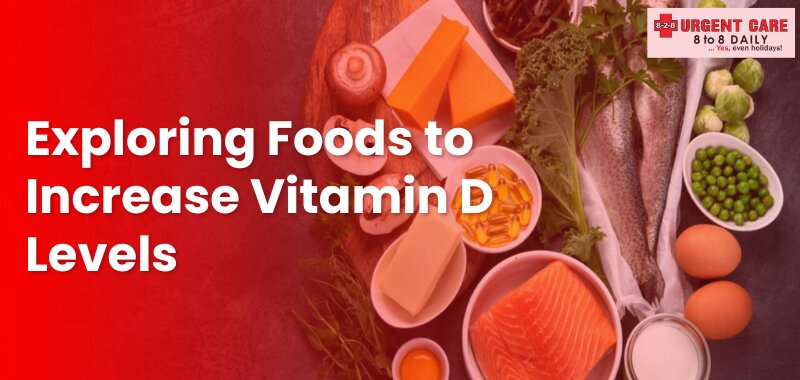


Our bodies require adequate amounts of nutrients, vitamins, and minerals to function and operate their daily tasks. We depend on our food habits and other natural sources, like the sun, for these nutrients. One such essential nutrient is vitamin D. It's responsible for some of the essential body functions.
Vegetables, fruits, seafood, and dairy products are foods high in vitamin D levels. Sunlight can also help to endogenously produce it.
When the sun's ultraviolet rays strike our skin, the synthesis of vitamin D starts. Diet supplements for vitamin D are also available on the market.
Let's continue reading to learn more about them and to explore foods that increase vitamin D levels in our bodies.
Vitamin D, also known as calciferol, is a fat-soluble nutrient responsible for some major body functions. It is widely known that it helps the body to absorb essential minerals like calcium and phosphorus.
Calcium is vital for bone growth and to make them stronger. It also helps to reduce inflammation and control infections. Some studies suggest that vitamin D can help reduce cancer cell growth.
Vitamin D is nicknamed the sunshine vitamin, as it is naturally produced in the presence of sunlight with the help of its ultraviolet-B (UVB) rays.
Typically, there are two types of vitamin D - vitamin D2 and vitamin D3. Vitamin D2, also known as ergocalciferol, is produced in plants and fungi; vitamin D3, also known as cholecalciferol, is produced in humans and animals.
Another difference between vitamins D2 and D3 is their absorption rate. Vitamin D3 gets absorbed more into our bloodstream, and hence, it is more effective in improving the vitamin D levels in the body.
Scientific research has also suggested that vitamin D2 supplements might be of lower quality in comparison to D3 supplements.
Also Read: How Does Vitamin C Boost Your Immunity and Improve Your Health?
As mentioned earlier, vitamin D is called the sunshine vitamin. In the winter, people spend less time outdoors, limiting their exposure to sunlight.
In the presence of sunlight, our bodies endogenously produce vitamin D, maintaining the vitamin D levels. There is one significant difference between the winter sunlight and summer sunlight. Winter sunlight is not as harsh on our skin as summer sunlight. Prolonged exposure to harsh sunlight can cause skin cancer and other diseases.
Winters bring with them a horde of germs and infections, like flu and cold. The remedy for these diseases lies in the winter sunlight itself. By taking the sunlight, our vitamin D levels increase in winter, which is linked to improving gut health.
An improved gut health leads to stronger immunity and healthier microbes. This also helps to reduce inflammation throughout the year. Vitamin D is also linked to promoting cell growth and thus helps boost immune cell production in our bodies.
Here are the foods that you can include in your diet to increase your vitamin D levels -
More than 42% of Americans have deficient levels of vitamin D. The main reason for vitamin D deficiency is our busy and indoorsy lifestyle.
It is suggested that staying for just half an hour in the afternoon sun can help us meet our vitamin D requirements. Here are some practical tips for vitamin D absorption -
At 828 Urgent Care, we care about your health and well-being. Maintain a healthy lifestyle by including vitamin D-rich foods and supplements in your diet.
Call us at (760) 216-6253 for personalized health insights. Your journey to a healthier you starts today!
Content Source: NIH, Health Match